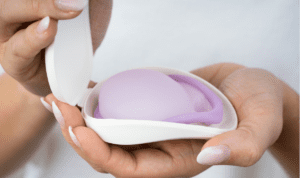
Is your current birth control method working for you? Or are you trying to figure out what else is out there in the world of contraceptives? Luckily, your online OBGYN can help you sort through your options.
Family planning and reproductive function are a huge part of women’s health. Over 65% of women of child-bearing age are using some form of contraception. As soon as a woman decides to be sexually active, she has important decisions to make regarding either family planning or contraceptives.
If you’re not ready to start a family just yet, choosing the right contraceptive path might be overwhelming with all the options available. Here, we’ll cover the basics and go in-depth on one promising option available for pregnancy prevention: the diaphragm.
First things first, let’s go over the basics. The two main categories to choose from are hormonal and non-hormonal birth control.
Hormonal birth control delivers medication that alters a woman’s hormones. Hormones are in charge of regulating the menstrual cycle and instructing the body to ovulate, or release an egg each month. Some examples of hormonal birth control include:
Non-hormonal contraceptive options do not interfere with your body’s natural hormones. You can think of these as barriers that physically prevent sperm from getting to your egg. Sometimes these are used in combination with spermicide products. Examples of this type of birth control include:
You have likely heard of most of the options that are listed above. The diaphragm, one of the less commonly utilized options, may be unfamiliar. Let’s uncover the mystery.
A diaphragm is a soft and flexible silicone cup-shaped device used by women to create a barrier at the cervix, blocking sperm from entering where the egg lies. The diaphragm is placed into the vagina before sex and removed after a specified amount of time. Contraceptive gel, or spermicide, is used together with the diaphragm to improve effectiveness.
Let’s take a look at how to use a diaphragm. In this example, we’ll take a peek at the instructions for the Caya contoured diaphragm. Here are the basic steps to follow:
A few things to remember when using a diaphragm:
Removing the diaphragm is simple. Six hours after sex, you can remove the diaphragm by hooking it with a finger on the rim. Pull it out, rinse, and repeat as needed.
So why would a woman choose a diaphragm? A major factor in the decision is that diaphragms don’t contain hormonal medication. This can be advantageous for fertility reasons and makes diaphragms an option for breastfeeding mothers (beginning six weeks post-birth).
The list of side effects caused by hormonal birth control is a lengthy one with some pretty scary possibilities. Some women experience migraines, blood clots, and even strokes while taking hormonal birth control. With diaphragms, side effects are virtually non-existent. The list is very short and includes discomfort, minor irritation, and vaginal discharge for some women while wearing the diaphragm.
Some benefits of using a diaphragm are comfort and convenience. Unlike condoms, which are disposable and require many over a lifetime, diaphragms are reusable and last for up to 2 years. That means you won’t have to get monthly prescriptions, won’t have to remember to take a pill every day, and won’t have to go through a painful IUD insertion. You can insert the diaphragm up to six hours before sex and leave it put up to 24 hours.
Contraception is something that most women will manage throughout a large part of their lives. Being aware of your options can help you make the best decision when choosing which method of birth control to use. Take the time to schedule an appointment with your online OBGYN to discuss your method and your options. A prescription is required for a diaphragm, but we can help with that!
Book Appointment Now Call For An Appointment
Are you ready to make a change? My Virtual Physician has expert doctors, including board-certified OBGYN Dr. Howard, who are available and ready to discuss your contraceptive options today.